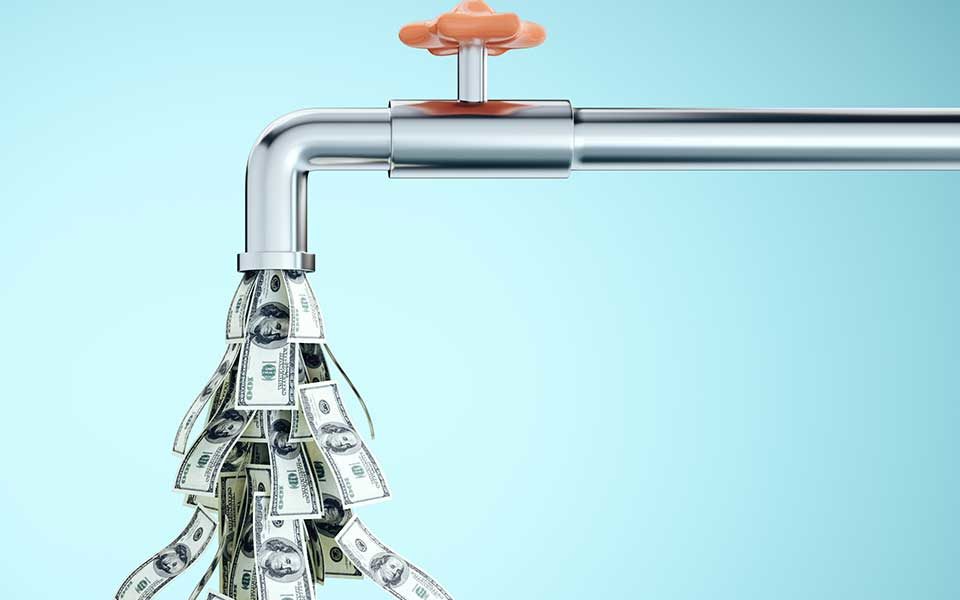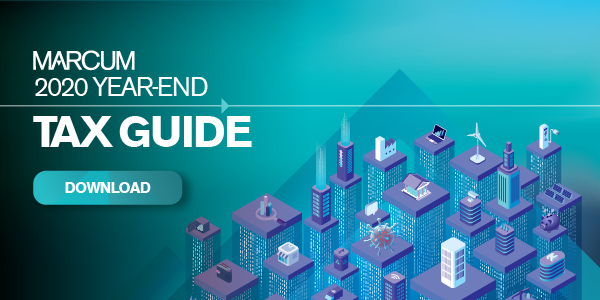Nonprofit Stimulus: Year in Review
The American economy suffered dramatic turbulence this year due to the COVID-19 pandemic. In response, Congress and the Treasury, as well as state and local governments, provided numerous benefits to individuals, businesses, and the nonprofit sector.
By now most nonprofit leaders are very familiar with the Coronavirus Aid, Relief, and Economic Security (CARES) Act, a $2.2 trillion COVID-19 emergency relief bill aimed at providing much needed economic relief to the American people and the country’s businesses. This law was the largest and most wide-ranging stimulus effort put forth this year.
The Act contains several provisions applicable to nonprofit organizations.
PAYCHECK PROTECTION PROGRAM
For Internal Revenue Sections 501(c)(3) and 501(c)(19) organizations with 500 or fewer employees (full-time and part-time) that have been in existence since March 1, 2020, the Act provides $510 billion in small business relief through federally backed loans under the “Paycheck Protection Program” (PPP). The PPP broadened the standard Small Business Association (SBA) eligibility from only for-profit businesses to include nonprofits organized under Section 501(c)(3) of the Internal Revenue Code. Veteran organizations, as defined in section 501(c)(19), are also considered eligible under the PPP. Trade associations, social welfare groups and other 501(c) entities continue to lobby Congress for inclusion under the Act.
Eligible nonprofits are able to receive the lesser of $10 million or 2.5 times their average total monthly payroll costs from the prior year with expedited loans of up to $1 million. Payments of principal, interest, and fees are deferred for at least 10 months, but not more than one year, the loan maturity is expanded to five years from an original 2-year period, and interest rates are at 1%. The SBA will not collect any yearly or guarantee fees for the loan, and all prepayment penalties are waived. No personal guarantees are required to receive funds, no collateral needs to be pledged, and NPOs are not required to show they cannot obtain credit elsewhere. Applicants are required simply to certify that the loan is necessary because of uncertain economic conditions and that they will spend the funds on payroll and other qualified costs.
PPP recipients are eligible for loan forgiveness for 24 weeks of eligible costs commencing from the origination date of the loan. The amount of loan forgiveness may be reduced if the organization reduces the number of employees as compared to the prior year, or if the employer reduces the pay of any employee by more than 25% as of the last calendar quarter. Nonprofits that re-hire workers who have been laid off as a result of the crisis will not be penalized for having a reduced payroll from the beginning of the relevant period.
APPLYING FOR FORGIVENESS
The application period for these loans has ended, and now the sector is working towards submitting forgiveness applications to lenders. As of this writing, many lenders are hanging on to the hope that Congress will grant blanket forgiveness for smaller loans which would dramatically cut their workload. However, some lenders have already opened their portals for forgiveness applications, and we expect most others will follow suit soon, regardless of what further changes are made to the program. The SBA has also issued guidance stating that borrowers with loans of $50,000 or less can utilize a new simplified application. Banks are expected to take up to 60 days to process forgiveness applications and the SBA, up to 90 days. Once a borrower has been fully forgiven by the SBA, they may take the loan off their books and record a gain from debt forgiveness.
EIDL PROGRAM
All other types of nonprofit organizations such as 501(c)(4) (social welfare organizations) and 501(c)(6) (trade and professional associations) entities with 500 or fewer employees that were in existence at March 1, 2020, were provided the opportunity to apply for emergency financial relief under the Economic Injury Disaster Loan (EIDL) grant program.
The existing EIDL program was originally slated to provide loans of up to $2 million but was quickly revised down to $150,000. The loans are available at an interest rate of 2.75 percent for nonprofits. Loan payment can be deferred for one year for loan maturities of up to 30 years. These loans may be used to pay fixed debts, payroll, accounts payable and other bills outstanding due to the impact of the pandemic. Qualifying nonprofits may apply for an EIDL loans in addition to a PPP loan as long as the funding is not used for the same purpose.
Perhaps more significantly for nonprofits in need of an immediate influx of funds was the EIDL emergency cash advance of $1,000 per employee up to a maximum of $10,000. These advances were disbursed quickly and awarded even if the EIDL loan application was denied, with no requirement for the recipient to repay the funds. Emergency advance funds can be used for payroll, increased material costs, rent or mortgage payments, or repaying other obligations that cannot otherwise be met because of revenue losses due to the pandemic.
STABILIZATION FUND
Larger entities with 500 to 10,000 employees can find financial relief through a new Stabilization Fund. While it does not provide for loan forgiveness, the fund does mandate an interest rate of no more than 2 percent and does not accrue interest or require repayment for the first six months. To qualify, the nonprofit must retain or rehire 90 percent of its staff at full compensation.
MAIN STREET LENDING PROGRAM
Later in the year, the Federal Reserve Board expanded the Main Street Lending Program to larger nonprofit organizations such as educational institutions, hospitals, and social service organizations. This program provides for loans through two lending facilities: the New Loan Facility and the Expanded Loan Facility. The former offers loans of up to $250,000 over five years while the latter allows for up to $10 million in credit. Eligibility criteria is fairly specific, including revenue, margin, cash, and debt repayment metrics similar to how for-profit businesses are evaluated for creditworthiness. As a result, many nonprofits are finding they don’t qualify. However, for those that do, the additional liquidity from this program is proving vital for continuing operations.
EMPLOYEE RETENTION CREDIT
All entities are entitled to a refundable payroll tax credit, the Employee Retention Credit, of up to $5,000 for each employee on the payroll when certain conditions are met. To be eligible, an entity must have carried on a trade or business during calendar year 2020 and satisfy one of the following two tests:
- Have business operations at least partially suspended during the calendar quarter by order of a government authority limiting commerce, travel, or group meetings due to the pandemic; or
- Have a reduction in revenue of at least 50 percent in the first quarter of 2020 as compared to the first quarter of 2019.
For all nonprofit organizations, the entity’s whole operations must be taken into account when determining the decline in revenues. For 501(c)(3) and 501(c)(19) organizations, funds provided via PPP loans are not eligible for these payroll tax credits.
UNEMPLOYMENT CLAIMS
The CARES Act does provide some protection for nonprofits facing historical levels of unemployment benefit claims. The law covers half of the lump-sum unemployment costs for employers that are self-funded. However, nonprofits face further challenges claiming this benefit as it became clear the law was written to require them to cover the cost up front and then submit for reimbursement. This was later fixed with the Protecting Nonprofits from Catastrophic Cash Flow Strain Act.
PAYROLL TAX DEFERRAL
The CARES Act also brought with it several broad business relief provisions, including an employer payroll tax deferral, which includes employers in nonprofit sector. The deferral does not apply to employee income tax withholding, the employee or employer portion of the Medicare tax, or the employee portion of the Social Security tax. The deferral applies only to the employer’s share of Social Security taxes. There are no employer eligibility requirements with respect to the deferral. This deferral applies to deposits and payments of the employer’s share of Social Security tax that would otherwise be required to be made during the period beginning on March 27, 2020, and ending December 31, 2020 (the “payroll tax deferral period”). The deferred taxes will be due and payable to the IRS in 50% installments by December 31, 2021, and December 31, 2022.
The PPP Flexibility Act enacted in June 2020 allows PPP loan recipients to defer the payment and deposit of these taxes, even if the loan is forgiven, which was not the case prior to enactment.





















